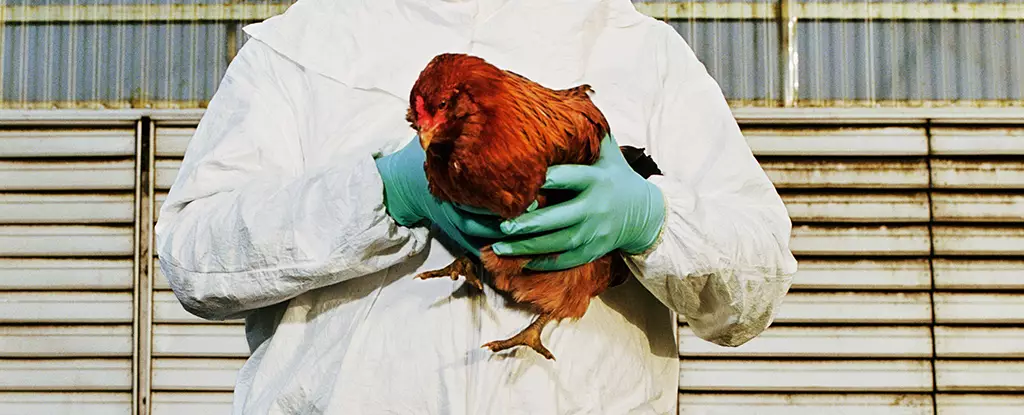The urgency surrounding the H5N1 bird flu virus cannot be overstated, particularly in light of its recent spread among animal populations in the United States. Health experts are keenly observing the potential for mutations that could facilitate human-to-human transmission of this highly pathogenic virus. Given its current fatality rate of 50 percent in confirmed human cases, the implications of these developments could be dire, necessitating stringent monitoring and controls over animal infections to mitigate the risk of a pandemic-like scenario.
The Mutation Threat: What We Know So Far
Research from the Scripps Research Institute illuminates a critical aspect of the H5N1 virus’s adaptability. In particular, the team’s findings highlight that a single amino acid mutation—specifically, Q226L—could enable the virus to switch its preferred target from avian-type receptors, which it typically uses to infect birds, to human-type receptors. This adaptation effectively acts as a “new pair of glasses,” providing the virus with the capability to latch onto human cells, which previously were not suitable for its infection.
In the context of previous pandemics, even one mutation can significantly amplify the threat level. The study conducted at Scripps compels us to acknowledge that the H5N1 virus has demonstrated an unexpected potential for rapid evolution, which scientists had generally considered a more gradual process involving multiple mutations. This acceleration in the evolutionary process poses a serious question about the readiness of current health measures to respond effectively.
While humans have had instances of contracting H5N1 from close contact with infected animals, the risk escalates if the virus finds a way to attach itself to the specific cells located in human airways. This adaptation could make it easier for the virus to transmit from one individual to another through respiratory droplets—think sneezing or even talking. Such a shift in capability would open the door to a scenario in which a virus that was once primarily zoonotic becomes a public health threat capable of sustained human transmission.
Even though the findings indicate a possible route towards increased transmissibility, researchers emphasize the need for additional studies to understand fully the complexities of the potential human-to-human transmission. The presence of one mutation does not automatically signal that the virus has evolved to be transmissible among humans; rather, it indicates that the foundations for such a shift have been laid.
A Call for Vigilance
The necessity for ongoing vigilance has never been clearer. The meticulous monitoring of H5N1 mutations as well as any novel strains emerging from animal reservoirs is crucial in the fight against avian influenza. As outlined by the researchers, early tracking of genetic changes will serve as a critical countermeasure against a potential increase in transmissibility. Maintaining such surveillance could provide insights into how best to respond if the virus starts exhibiting concerning behaviors related to human infection.
The implications extend beyond merely observing current trends in how H5N1 spreads; there are also pressing considerations on how the health infrastructure can be bolstered to withstand emerging bio-threats. The collaboration of scientists, public health officials, and policymakers is imperative to ensure proactive measures are in place.
The potential for H5N1 to adapt into a form that could readily transmit among humans points to a larger issue regarding public health preparedness. As the world navigates through the complexities of zoonotic diseases and potential pandemics, research must continue to dissect the biological mechanisms at play. Understanding mutational pathways and transmission possibilities will be pivotal in crafting an effective response strategy and ensuring we are better equipped against any possible resurgence of H5N1 or other viral threats.
Continued investment in research, combined with proactive policy measures, will undoubtedly help mitigate the risks and safeguard human health in the face of such formidable viral threats. The lessons we learn today could very well shape our ability to face the public health challenges of tomorrow.

